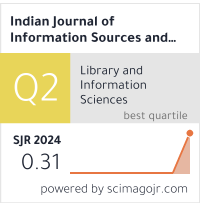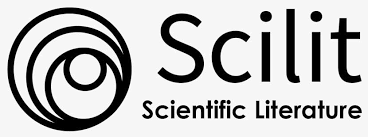A Scientometric Analysis of Astrophysics Research Output in India (1989-2016): Study Based on Web of Science Database
DOI:
https://doi.org/10.51983/ijiss.2017.7.1.465Keywords:
Scientometrices, Web of Science, Astrophysics, H IndexAbstract
Astrophysics is a bough of space science that applies the laws of physics and chemistry to explain planets, galaxies, the birth, life, death of stars, nebulae and other objects in the universe. Astrophysics creates physical theories of small to medium-size structures in the universe. Astrophysicists seek to understand the universe and our place in it. At NASA, the objective of astrophysics be “to discover how the universe work, explore how it began & evolved, and search for life on planets around other stars.” The h index was suggested in 2005 by Jorge E. Hirsch, a physicist at University of California, San Diego (UCSD ).The h-index is a factor determining both the quantity and the quality of a scientist’s research output. The h-index can be calculated without human intervention in Scopus and Web of Science or manually in other databases that give citation information (e.g., PsychINFO, SciFinder, Google Scholar). The index is based on a list of publications ranked in descending array by the number of citations these publications received. The value of h is equal to the number of papers (N) in the list that have N or more citations. This study analyzes the h index of Astrophysics research output in India from the year 1989-2016. The data was downloaded from Web of Science database which was maintained by Thomson Reuters. The findings of the study revealed that the author S.Banerjee has published 12 papers with 12 or more citations. Followed by the author A.Kumar has published 11 papers with 11 or more citations.
References
Bornmann, L., Stefaner, M., de Moya Anegón, F., & Mutz, R. (2014). Ranking and mapping of universities and research-focused institutions worldwide based on highly-cited papers: A visualization of results from multi-level models. Online Information Review, 38(1), 43-58.
Birnholtz, J., Guha, S., Yuan, Y. C., Gay, G., & Heller, C. (2013). Cross‐campus collaboration: A scientometric and network case study of publication activity across two campuses of a single institution. Journal of the American Society for Information Science and Technology, 64(1), 162-172.
Konur, Ozcan (2012). The scientometric evaluation of the research on algae and bio-energy. Applied Energy, 88(10), 3532-3540.
Gupta, B. M., Kaur, H., & Kshitig, A. (2013). Dementia research in India: A scientometric analysis of research output during 2002-11. Annals of Library and Information Studies (ALIS), 60(4), 280-288.
Nishy, P., Parvatharajan, P., & Prathap, G. (2012). Visibility and impact of the Indian Journal of Chemistry, Section B during 2005–2009 using scientometric techniques. Indian Journal of Chemistry. B, 51, 269-284.
Mooghali, A., Alijani, R., Karami, N., & Khasseh, A. (2011). Scientometric analysis of the scientometric literature. International Journal of Information Science and Management (IJISM), 9(1), 19-31.
Si, Linbo (2010). The application of scientometrics in the appraisal of periodical academic influence. Wuhan Daxue Xuebao (Xinxi Kexue Ban)/Geomatics and Information Science of Wuhan University, 35(1), 200-204.
Bonilla-Calero, A. I. (2008). Scientometric analysis of a sample of physics-related research output held in the institutional repository Strathprints (2000-2005). Library Review, 57(9), 700-721.
Garg, K.C. (2003). An overview is given of the studies published in the international journal Scientometrics during 1978-2000 on cross-national, national and institutional scientometric assessment. Scientometrics, 56(2), 169-199.
Vinkler, P. (2000). Evaluation of the publication activity of research teams by means of scientometric indicators. Current Science, 79(5), 602-612.
Rodrigo Costas, María Bordons (2007). The h-index: Advantages, limitations and its relation with other bibliometric indicators at the micro level. Journal of Informetrics, 1, 193–203. doi:10.1016/j.joi.2007.02.001.
Data Retrieved from Web of Science database (www.webofscience.com) on February 2nd, 2017 (2:45 PM).
Downloads
Published
How to Cite
Issue
Section
License
Copyright (c) 2017 The Research Publication

This work is licensed under a Creative Commons Attribution-NonCommercial-NoDerivatives 4.0 International License.









